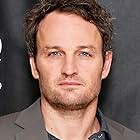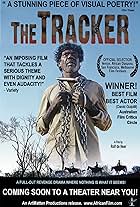In 1931, three half-white, half-Aboriginal girls escape after being plucked from their houses to be trained as domestic staff, and set off on a journey across the Outback.In 1931, three half-white, half-Aboriginal girls escape after being plucked from their houses to be trained as domestic staff, and set off on a journey across the Outback.In 1931, three half-white, half-Aboriginal girls escape after being plucked from their houses to be trained as domestic staff, and set off on a journey across the Outback.
- Awards
- 23 wins & 25 nominations
Lorna Lesley
- Miss Thomas
- (as Lorna Leslie)
- Director
- Writers
- All cast & crew
- Production, box office & more at IMDbPro
Storyline
Did you know
- TriviaEverlyn Sampi (Molly Craig) ran away twice during filming. In one instance, she was found in a phone booth, trying to buy tickets back to Broome.
- GoofsThe three girls Molly, Gracie and Daisy were not taken by surprise and removed by force from Jigalong. The violent removal scene in the film is entirely fictional. The girls' mothers were informed beforehand they were to travel with Constable Riggs and, without any protest, they acquiesced in the decision. The girls left Jigalong on horseback, not locked in a motor car.
- Quotes
Daisy Kadibill: [after Molly lifts Daisy up to a bird's nest to gather some eggs to eat] Three of them!
Molly Craig: Perfect. One for you, one for me, and one for both of us!
- Crazy creditsThe painting songs sung by the Walpiri, Amatjere and Wangajunka women were not sacred songs, but were songs able to be performed in public.
- ConnectionsEdited from A Steam Train Passes (1974)
- SoundtracksNgankarrparni
(Sky Blue Reprise) (2002)
Written by Peter Gabriel
Featured by The Blind Boys of Alabama, Myarn Lawford (as Myarn) and Ningali Lawford
Featured review
MILD SPOILER AHEAD: This is the 200th film I have reviewed for IMDb and one of the most satisfying. Phil Noyce has produced here a piece of cinematic poetry when it could have easily been tendentious agit-prop. The story from the 1930s of three half-cast aboriginal girls walking 2000 km of Western Australia to escape the clutches of white assimilationists is seen through their frame of reference. We see the harsh beauty of the countryside as they do, not an alien landscape but as their back yard. They have all been brought up in the desert and together know how to survive, a point eventually realised by their pursuers, who then lie in wait at their destination.
The three young girls, Mollie, Grace and Daisy, are stunningly portrayed by Everlyn Sampi, Tianna Sainsbury and Laura Monaghan. Molly, at 14 the oldest, has the largest part but the three of them function together as if they really were sisters. Their mother and grandmother , played by Ningali Lawson and Myana Lawson (daughter and mother in real life) are equally convincing, as is David Gulpilil as the relentless black tracker.
The most difficult role in the film is that of A O Neville (Mr Devil, as the aborigines called him), Chief Protector of Aborigines, a sincere and energetic advocate of the monstrous policy which resulted in a generation or more of half-cast children being removed from their families. It would be easy to pillory Neville as a monster, but Kenneth Branagh manages to give us a rounded picture of a man who was not inhumane, who tried to advance what he saw as the welfare of his charges despite lack of money and enormous logistical problems (not to mention an unco-operative police force). Had it not been for these obstacles the aboriginality of Australia would probably have been reduced to a few scattered reserves in the deserts run as freak shows for tourists.
Some critics of the armchair lefty variety have criticised the movie as not being political enough, and its true there's plenty of room for righteous (or leftist) indignation on the topic of the stolen generation, but I think a more overt political message would have diminished it. Imagine say, if John Pilger had made this film. Instead we have a near-classic. Never I have I seen the visual power of the Australian landscape better depicted, and seldom have I seen a better celebration of the human spirit. And this is a true story. The real Molly and Daisy take their bows at the end. Things didn't quite work out for them the way they might have, but they survived and stayed with their people.
The three young girls, Mollie, Grace and Daisy, are stunningly portrayed by Everlyn Sampi, Tianna Sainsbury and Laura Monaghan. Molly, at 14 the oldest, has the largest part but the three of them function together as if they really were sisters. Their mother and grandmother , played by Ningali Lawson and Myana Lawson (daughter and mother in real life) are equally convincing, as is David Gulpilil as the relentless black tracker.
The most difficult role in the film is that of A O Neville (Mr Devil, as the aborigines called him), Chief Protector of Aborigines, a sincere and energetic advocate of the monstrous policy which resulted in a generation or more of half-cast children being removed from their families. It would be easy to pillory Neville as a monster, but Kenneth Branagh manages to give us a rounded picture of a man who was not inhumane, who tried to advance what he saw as the welfare of his charges despite lack of money and enormous logistical problems (not to mention an unco-operative police force). Had it not been for these obstacles the aboriginality of Australia would probably have been reduced to a few scattered reserves in the deserts run as freak shows for tourists.
Some critics of the armchair lefty variety have criticised the movie as not being political enough, and its true there's plenty of room for righteous (or leftist) indignation on the topic of the stolen generation, but I think a more overt political message would have diminished it. Imagine say, if John Pilger had made this film. Instead we have a near-classic. Never I have I seen the visual power of the Australian landscape better depicted, and seldom have I seen a better celebration of the human spirit. And this is a true story. The real Molly and Daisy take their bows at the end. Things didn't quite work out for them the way they might have, but they survived and stayed with their people.
- How long is Rabbit-Proof Fence?Powered by Alexa
Details
- Release date
- Country of origin
- Official site
- Languages
- Also known as
- Rabbit Proof Fence
- Filming locations
- Production companies
- See more company credits at IMDbPro
Box office
- Budget
- $6,000,000 (estimated)
- Gross US & Canada
- $6,199,600
- Opening weekend US & Canada
- $88,352
- Dec 1, 2002
- Gross worldwide
- $16,220,968
- Runtime1 hour 34 minutes
- Color
- Sound mix
- Aspect ratio
- 2.35 : 1
Contribute to this page
Suggest an edit or add missing content
































